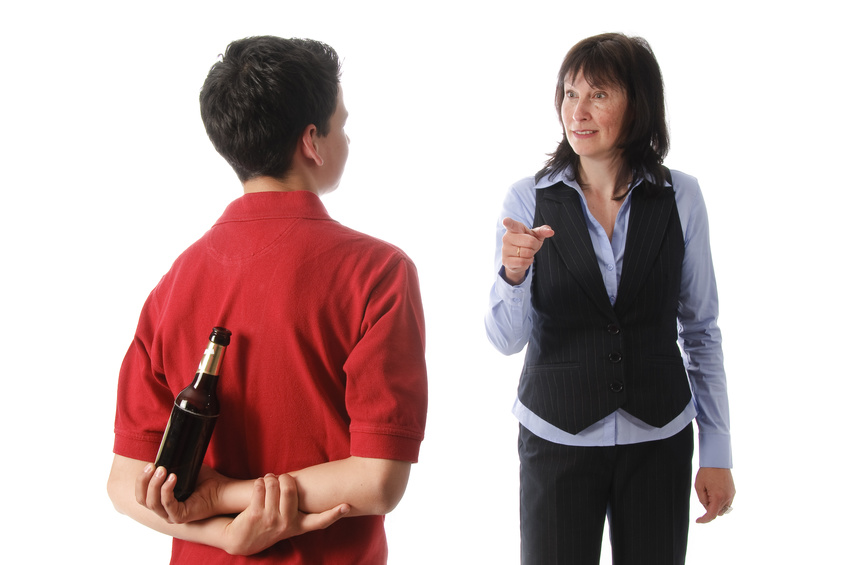
In spite of recent declines in teen alcohol consumption, alcohol remains the number one drug of choice for America’s young people, and the percentage of teens who drink increases by grade. The 2014 Monitoring the Future study found that:
- Over a quarter of students have consumed more than just a few sips of grade alcohol by the 8th grade.
- Two out of every three students have consumed more than just a few sips of alcohol by the end of high school.
- Half of 12th graders and one in nine 8th graders reported having been drunk at least once in their life.
- Among 12th graders, 20% reported having five or more drinks on the same occasion in rapid succession within the prior two week period.
The consequences of early drinking can be catastrophic:
- More young people die from alcohol-related suicide, homicide or accident than all other drugs combined.
- Because of the way the brain develops during the teen and young adult years, those who begin drinking before age 15 are four times more likely to develop alcoholism than those who begin at age 21 (16% versus 3%). Kids do not set out to become alcoholics, but for those with the genetic predisposition towards alcohol dependence, that first experiment with a fruity, fun wine or a sweet “after dinner drink” can set the stage for a lifetime of chemical dependency.
How to reduce the chances your child will consume alcohol at an early age?
Here is advice from the National Council on Alcoholism and Drug Dependence…
Perceived risk and social acceptance are the top two factors in whether kids decide to try drugs or alcohol. What does this mean to parents?
- If kids understand the risks of using drugs (including alcohol) and they see using them as socially unacceptable, they are less likely to try drugs. Talk with them about the real dangers of consuming drugs or alcohol at a young age.
- If you consume alcohol as a parent, make sure you set a good example of responsible drinking. Drink moderately, don’t drink and drive, and lock up the alcohol in your home.
- Establish clear family rules about alcohol and other drugs. Here are some ideas:
- Kids under 21 will not drink alcohol. Period.
- Kids will not ride in a car with someone who has been drinking or using drugs.
- Older siblings will not encourage younger kids to drink or use drugs.
- Kids under 21 will not host parties at our home without parental supervision
- Kids will not stay at a teen’s party where alcohol or drugs are present.
What to look for: signs that your child may be using alcohol or other drugs
- Eyes that are bloodshot, or teen uses eye drops to mask bloodshot eyes
- Pupils that are smaller or larger than normal
- Frequent and unexplained nosebleeds that could be related to snorted drugs
- Changes in appetite or sleep patterns. Sudden weight loss or weight gain
- Seizures without a history of epilepsy
- Deterioration in personal grooming or physical appearance.
- Impaired coordination, injuries/accidents/bruises that they won’t or can’t tell you about
- Unusual smells on breath, body, or clothing
- Shakes, tremors, incoherent or slurred speech, impaired or unstable coordination
- Skipping class, declining grades, getting in trouble at school
- Unexplained or frequent car accidents or “dings”
- Presence of drinking straws or pens that have been stripped of the center ink cartridge – used to snort a crushed or powdered drug
- Tin foil that has been burned on one side and is has with melted “trails” on the reverse
- Missing money, valuables, prescription or prescription, or the teen’s personal items like cell phones or expensive textbooks go missing and allegedly “stolen”
- Acting isolated, silent, withdrawn, engaging in secretive or suspicious behaviors
- Clashes with family values and beliefs
- Preoccupation with alcohol and drug-related lifestyle in music, clothing and posters
- Demanding more privacy, locking doors and avoiding eye contact
- Sudden change in relationships, friends, favorite hangouts, and hobbies
- Frequently getting into trouble (arguments, fights, accidents, illegal activities)
- Using incense, perfume or air fresheners to hide the odor of smoke or drugs
- Unexplained, confusing changes in mood, personality and/or attitude
- Periods of unusual hyperactivity or agitation
- Lack of motivation, inability to focus, lethargy or a “spaced out” appearance
- Appears fearful, withdrawn, anxious, or paranoid, with no apparent reason
Where to find help
The free Power of Parents handbook from Mothers Against Drunk Driving will help you talk with your teens about the dangers of alcohol. Available in English or Spanish.
DrugFree.org’s helpline can answer your questions in English or Spanish. Call 1-855 378-4373.
If you suspect your teen is using drugs or alcohol, the National Institute on Drug Abuse (NIDA) can help you figure out where to start.
